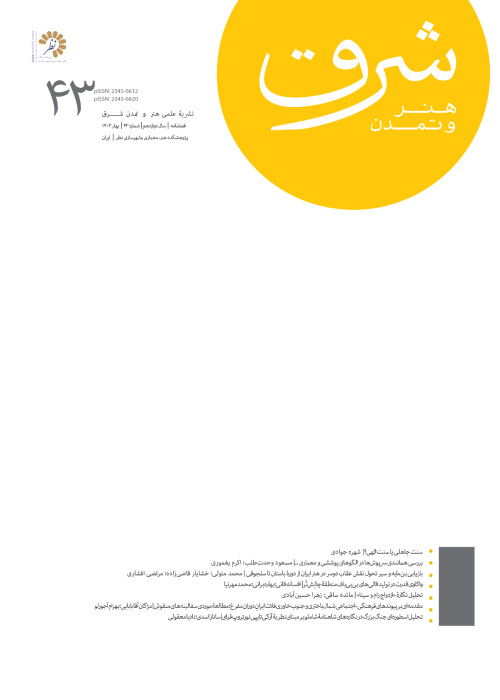A Study of the Art of Chinese Quranography from the Sixteenth to the End of the Eighteenth Century
Calligraphy has always been one of the top Islamic arts. This meaning comes from the readability and the beautiful writing of Quran verses such as the divine word and the miracle of Islam religion, and this art can be referred to as a special art of the Islamic world. Like any other arts, which found a way to other areas, when Islam started being spread and combined with indigenous elements and their ancient arts, Islamic calligraphy entered different disciplines (despite the lack of change in the Arabic alphabet) then gained a new shape and different forms. For example, different types of Kufic script (Kufic script was one of the earliest scripts of the Arabic alphabet), were named based on local geographies, such as Maddani Kufic script, Makki Kufic, Eastern Kufic, Western Kufic, etc. As a country with a non-Islamic context and a Buddhist religious background, China’s Islamic calligraphy has undergone changes in combination with the country’s ancient culture and art and the current religion, presenting different graphic forms, which is called Sini calligraphy. It is different from the usual calligraphy in the Islamic world. Sini calligraphy appears on various themes such as the Quran, mosque inscriptions, functional objects, and tombstones. This study uses descriptive analysis to analyze the calligraphy and decorations used in the Chinese Quran as the main manifestation of Sini calligraphy, that is, the word of God, to answer the following question: What is the characteristic form of calligraphy in the Sino- Arabic Qurans? What is the relationship between the Quranic verses in the Sino-Arabic Quran and the writing style? What are the elements of the decoration and lighting of the pages of the Sino-Arabic Quran? What is the origin of the Sini calligraphy that is used in the Sino-Arabic Quran? The results show that the calligraphy of Sino-Arabic Qurans has found a unique form by combining Arabic script with brush strokes and twists and beats of songs in Chinese calligraphy. In the Quranic illumination and the decoration of the pages, common symbols in Buddhism, ancient motifs as well as objects used in Chinese culture and art, bright colors and flowers and plants and symbols of this land, have been used, as well as the calligraphy used in Chinese Qurans rooted in Muhhaqiq script.
- حق عضویت دریافتی صرف حمایت از نشریات عضو و نگهداری، تکمیل و توسعه مگیران میشود.
- پرداخت حق اشتراک و دانلود مقالات اجازه بازنشر آن در سایر رسانههای چاپی و دیجیتال را به کاربر نمیدهد.


